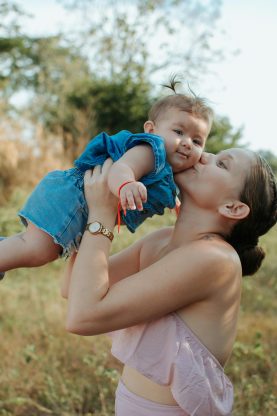Table of Contents
Emergency Preparedness
One of the most important safety procedures for babysitters is being prepared for emergencies. Before babysitting, make sure you have a list of emergency contacts, including the parents’ contact information, the contact information for a neighbor or nearby relative, and the phone number for emergency services. It is also a good idea to know the address of the home where you are babysitting in case you need to call for help. Additionally, familiarize yourself with the location of important items such as a first aid kit, fire extinguisher, and emergency exits. Being prepared for emergencies can help you act quickly and decisively in a crisis.
On-Demand Childcare in Your Neighborhood
Book a Sitter
Childproofing the Home
Childproofing the home is another essential safety procedure for babysitters. Before the parents leave, take a few minutes to walk through the home and identify any potential hazards. Make sure that dangerous items such as cleaning supplies, medications, and sharp objects are stored out of reach of children. Check that electrical outlets are covered, cords are out of reach, and furniture is secured to the wall to prevent tip-overs. It is also important to ensure that doors leading outside are locked or secured to prevent children from wandering off. By childproofing the home, you can create a safe environment for the children in your care.
Safe Sleep Practices
For babysitters looking after infants or young children, safe sleep practices are a critical safety procedure to follow. Babies should always be placed on their backs to sleep in a crib with a firm mattress and fitted sheet. Avoid using blankets, pillows, or stuffed animals in the crib, as these items can pose a suffocation risk. Make sure the crib is free of any loose or dangling cords that could be a strangulation hazard. Additionally, never put a baby to sleep on a soft surface such as a couch or armchair, as this can increase the risk of sudden infant death syndrome (SIDS). By following safe sleep practices, you can reduce the risk of sleep-related accidents.

Communication with Parents
Maintaining open and clear communication with the parents is another essential safety procedure for babysitters. Before the parents leave, make sure you have all the necessary information about the children in your care, including their bedtime routine, any allergies or medical conditions, and any specific rules or restrictions that need to be followed. Update the parents throughout the evening with any important information or concerns, such as a change in the child’s behavior or a minor accident. If you have any questions or are unsure about how to handle a situation, don’t hesitate to reach out to the parents for guidance.
By communicating effectively with the parents, you can ensure that everyone is on the same page and provide the best care for the children.
Basic First Aid Procedures
Being familiar with basic first aid procedures is crucial for babysitters, as accidents can happen when looking after children. Before babysitting, make sure you are trained in CPR and first aid, or at the very least, have a basic understanding of how to handle common injuries such as cuts, burns, or falls. Keep a well-stocked first aid kit on hand that includes items such as bandages, antiseptic wipes, and adhesive tape. In the event of an emergency, stay calm and assess the situation before taking action. If necessary, call for help and follow the steps outlined in your first aid training. By being prepared and knowledgeable in first aid procedures, you can respond effectively in the event of an injury or medical emergency.
Conclusion
As a babysitter, safety should always be your top priority. By following these essential safety procedures, you can create a safe and secure environment for the children in your care and ensure that their well-being is protected. Remember that accidents can happen, but by being prepared and proactive, you can handle any situation that may arise. By following these safety procedures, you can be a responsible and trustworthy babysitter who provides peace of mind to parents and a fun and safe experience for the children.










